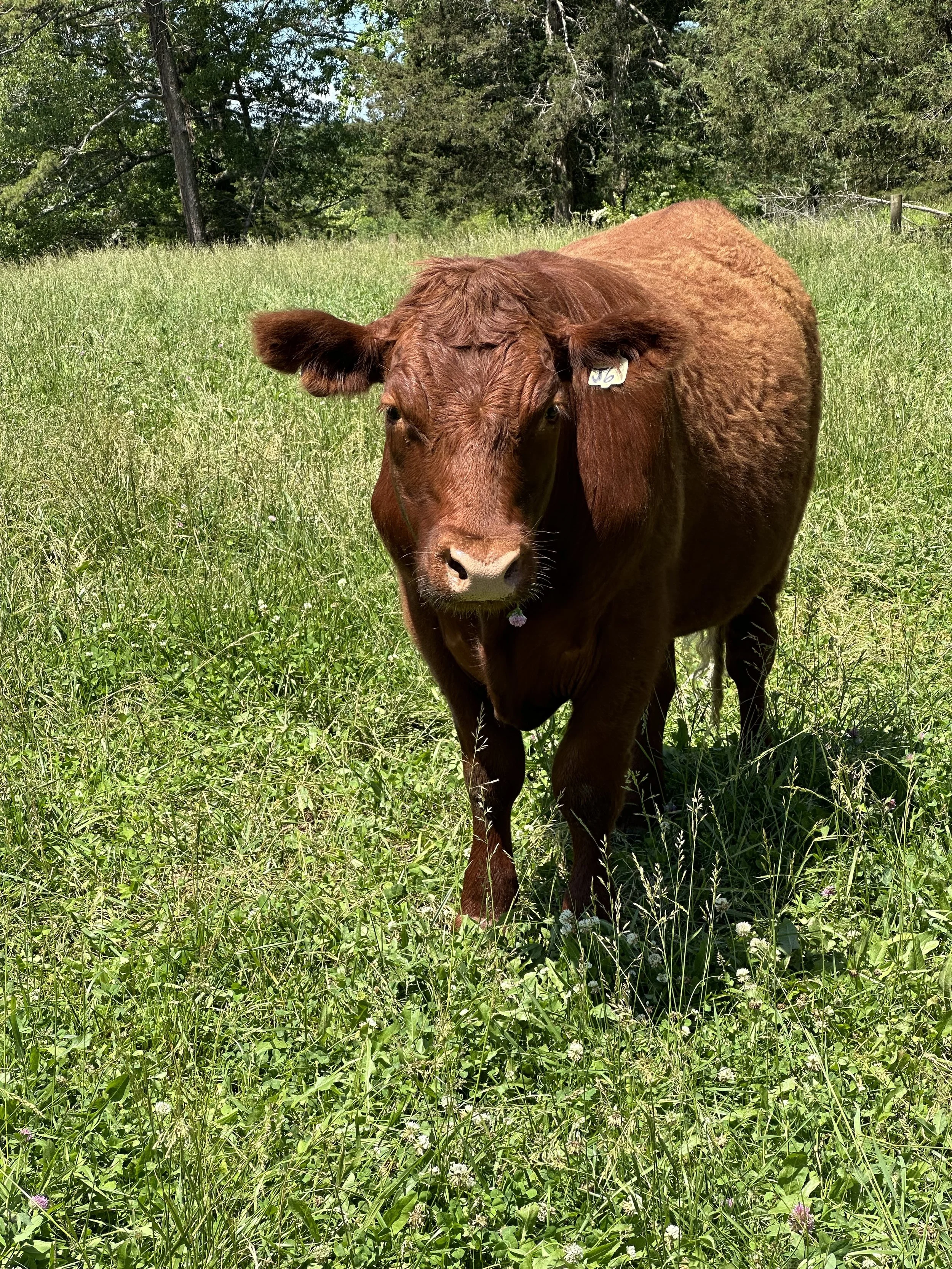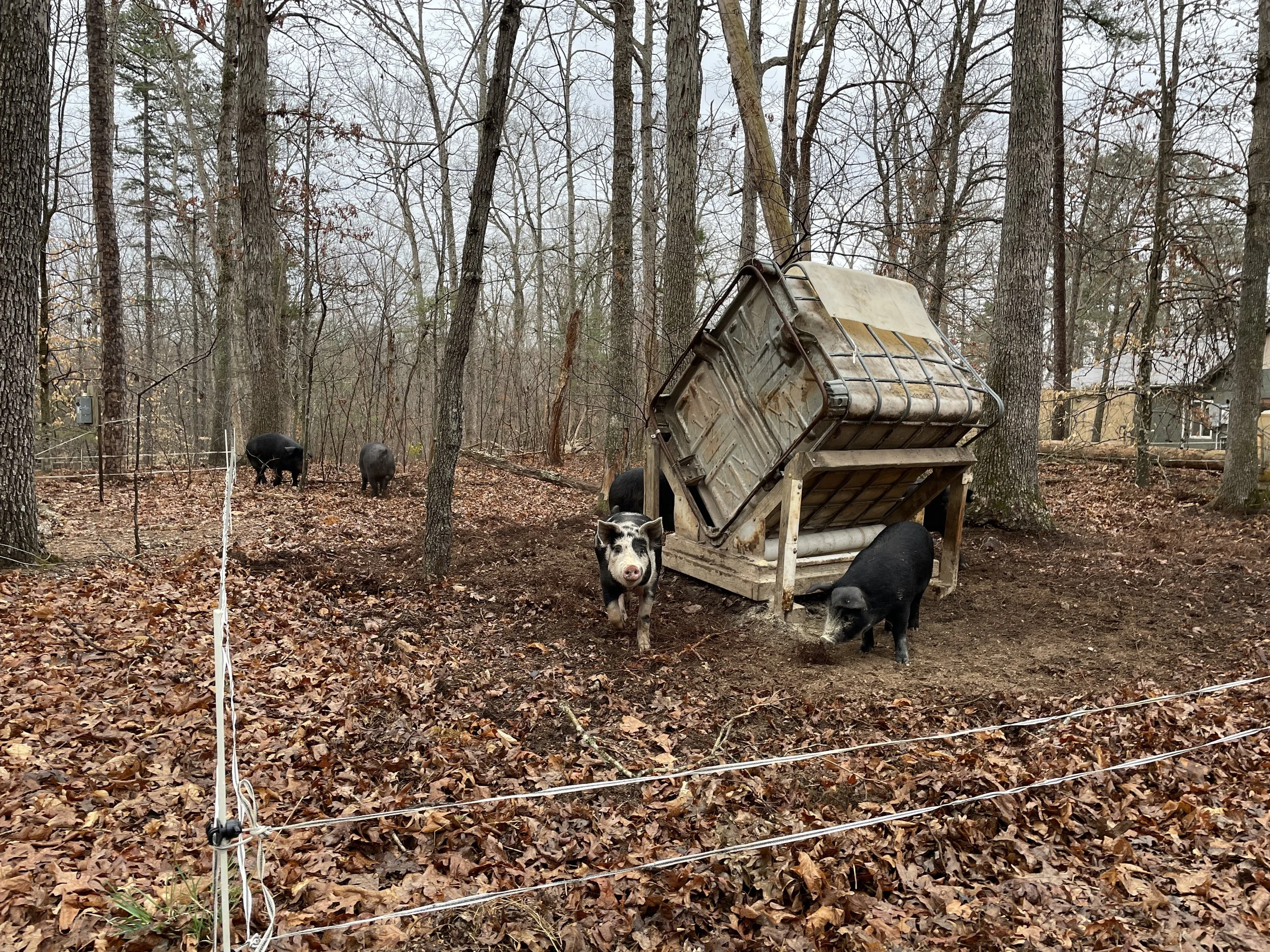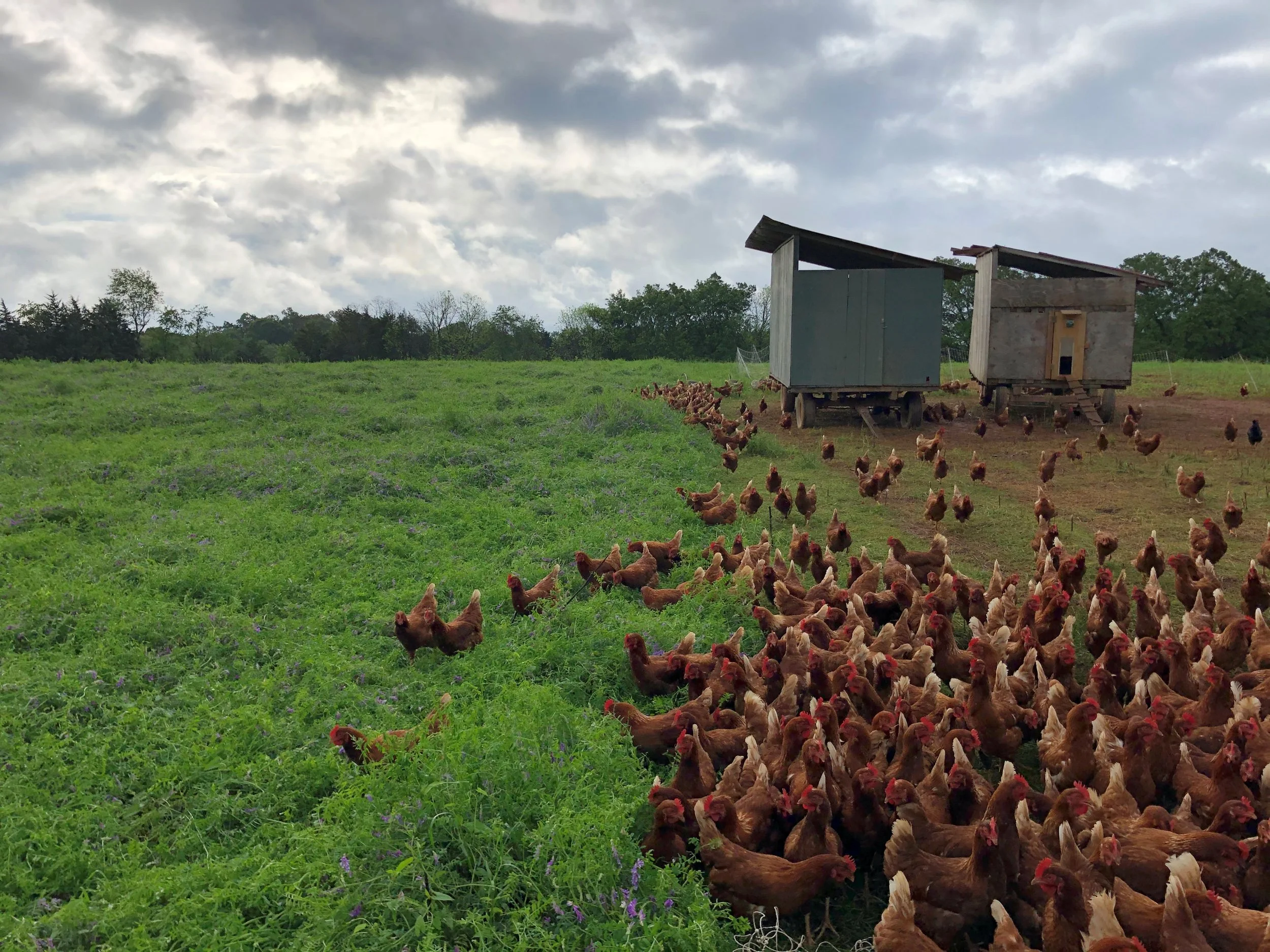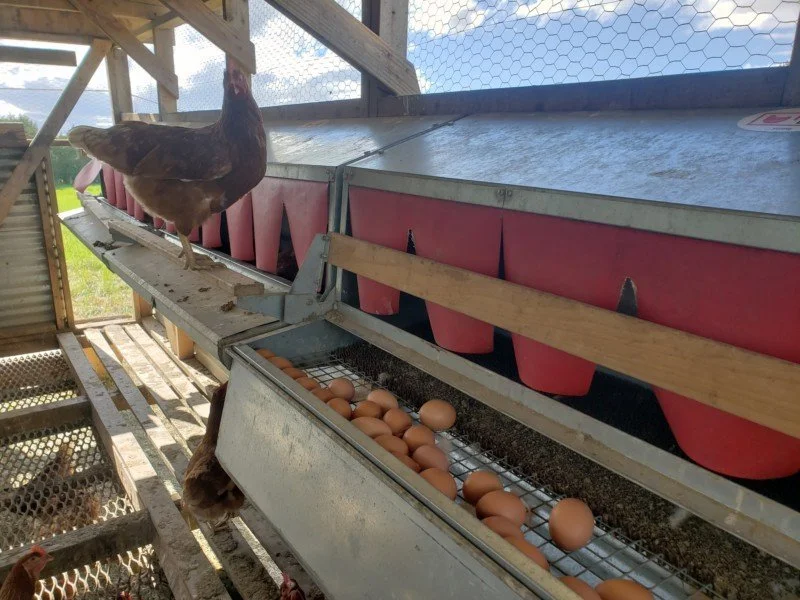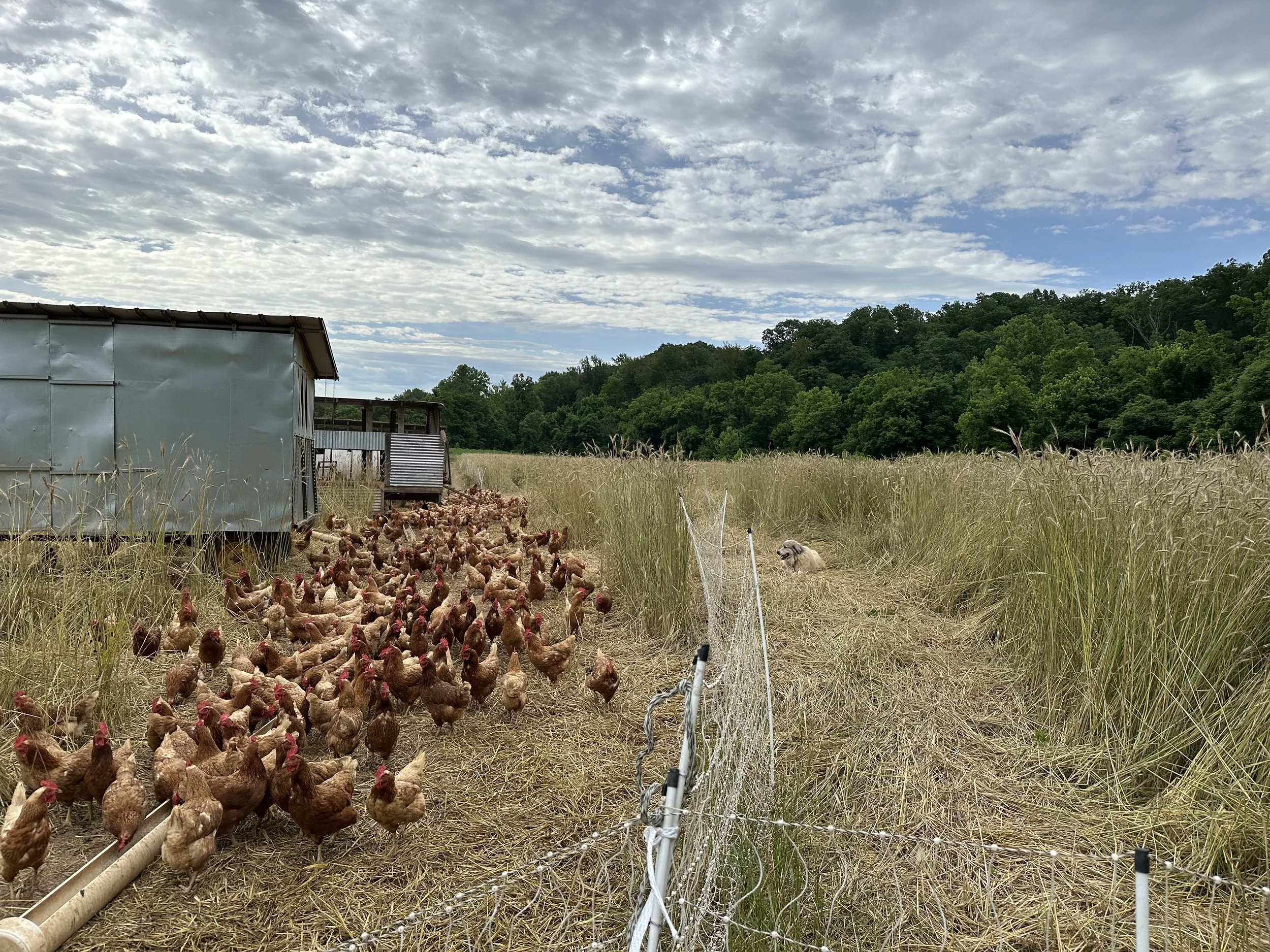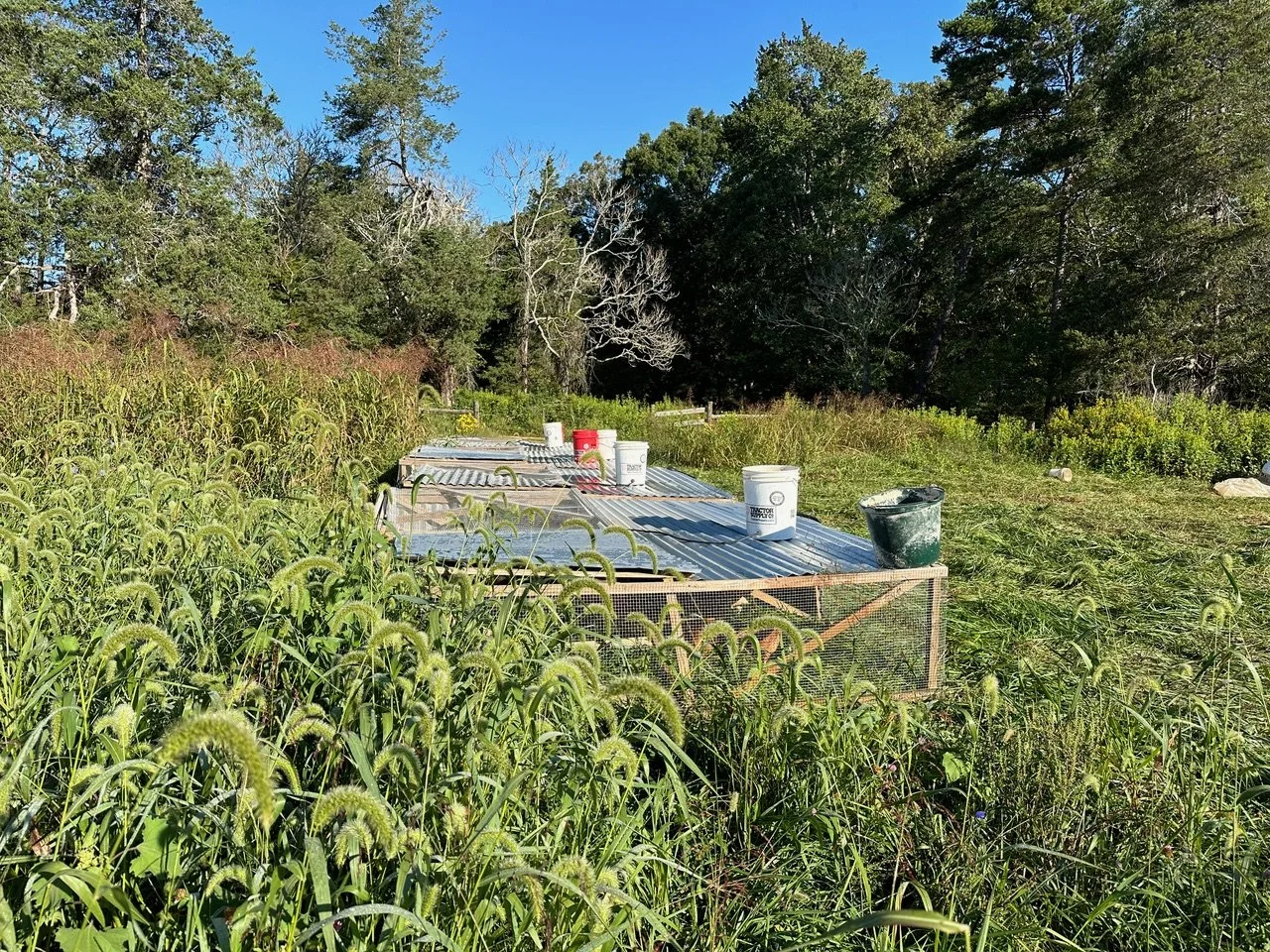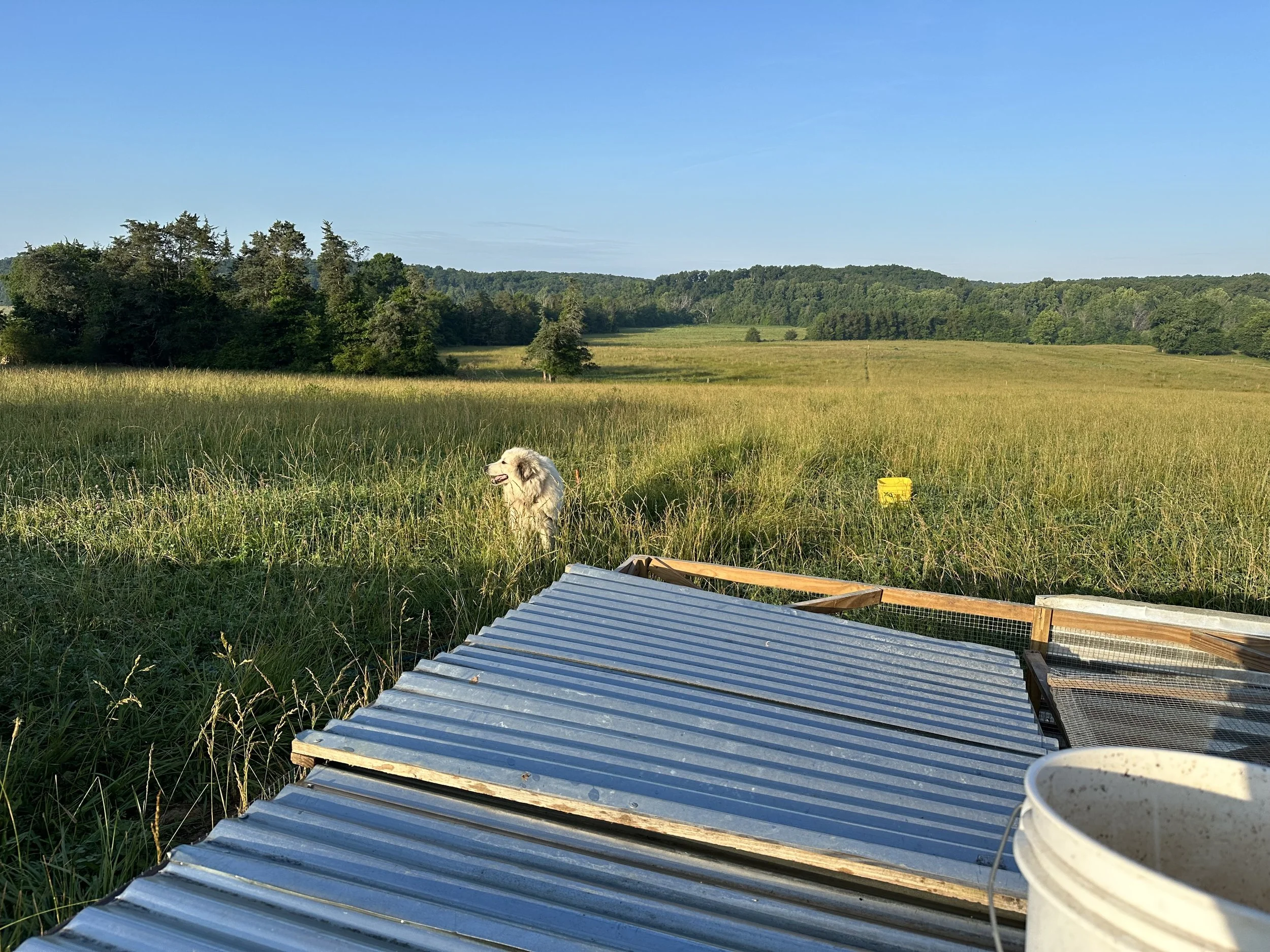Livestock at Bellair
The first thing to know is that we use rotational grazing systems for all of our animals. That means they move frequently onto fresh pasture, which is a little more labor intensive for us, but great for the animals, the pastures, and the soil. In addition to raising animals for meat, they help manage the land with ecology in mind (providing helpful disturbance in brushy/overgrown areas) and provide fertility for our vegetable operation (manure!).
By The Numbers
In a single farm season, we raise approximately
800 laying hens for eggs
3000 broiler chickens for meat
60 hogs for meat
24 beef cattle for meat (with a whole-herd size of 60 right now).
We're particularly proud of our cattle and the quality of our beef products. They graze pretty diverse forage throughout the year and even in the winter, we continue grazing 'stock pile' grass, though we do feed them hay when needed.
⬅ This is a helpful graphic to understand rotational grazing. We divide large fields into sections with a mix of permanent and temporary fencing. Each type of animal will graze a section for a set period of time: broilers move every day, egg layers once per week, cattle every 2-3 weeks, hogs ~3 weeks. There is a lot of planning & labor involved, spread between four designated crew members!
In a well-managed system, rotational grazing promotes vigorous re-generation of plant material, and evenly deposits manure on fields, increasing fertility. This type of pasture-based system also allows our animals to live out natural instincts like scratching, rooting, dust bathing and more. Here are some factors we consider when planning animal rotations:
Pasture Quality – Vegetation must reach a certain height and thickness before animals are moved onto the land to graze. The length of time needed for pasture to recover varies depending on the season and the weather. In winter, we tend to keep smaller numbers of hogs, halt broiler production and move our hens indoors.
Transportation & Fencing – Transporting livestock can be a limiting factor for animal rotation schemes. At Bellair we use portable electric fencing, mobile shelters, and movable water tanks to move our animals around.
Food Safety – We veggie farmers must wait at least 90 or 180 days (depending on crop type) before harvesting from land that has had raw manure deposited on it. (this applies to grazing animals on "resting" cover cropped veggie fields, which we try to do as much as possible)
CATTLE
Breeds are Red Devon, an English heritage breed, as well as Black Angus mixed in. Our breeding stock is specifically selected for its ability to perform well and finish well on a 100% grass diet. They have been lived on/grazed grass their entire lives, even before they came here.
When our beef goes to the processor, it is hung in a dry aging space for 2 weeks before cutting, so fat and flavor are distributed to all cuts, including ground.
HOGS
We raise a mix of heritage breed hogs, including Tamworths, Berkshires, and crosses.
Pigs are truly a force of nature! It does not take long for even a small group of young pigs to enact large disturbance on the landscape, and even faster for larger hogs. Disturbance is not a good or bad thing on its own in ecological terms. Heavy disturbance can be ok, or even good, as long as there is a long recovery period. We move the pigs about every 3 weeks and they don’t revisit the same area for typically 9-12 months or more.
They help to keep the ecosystem in primary succession (think prescribed burns) by maintaining grasslands and roughing up land/moving dirt; they naturally “till” the soil with their snouts as they forage. They forage along the outskirts/treelines of Bellair, as well as in some of our designated conservation areas.
They also eat lots of veggie & egg scraps, along with a non-GMO feed from Sunrise Farms in Stuarts Draft, VA (primarily oats, corn, and soybeans).
EGG LAYERS
We raise the Golden Comet breed, a cross of Rhode Island Red (a hardy heritage breed with a pleasant temperament) and White Leghorn (a prolific, early laying hen). We keep laying hens for 2 years max; every chicken has the same number of eggs, but because ours produce at faster rates, their productivity decreases significantly after ~2 years.
We move the hens every week and our pastures and fields benefit. Their manure adds nitrogen and lightly tills/aerates the soil. They also graze on our grasses and cover crops, eat bugs, and are supplemented with a non-GMO feed (corn, soybean, oats) from Sunrise Farms in Stuarts Draft, VA.
The layer flock is guarded by one of our two guardian dogs, sibling Pyrenees-Anatolian Shepherds Deuce and Decker. The are both great at their jobs, except that sometimes they like to wander away from their areas...Deuce in particular. She has been on many tractor/ATV rides back to spot!
BROILERS
We raise mostly the "Freedom Ranger" and also the "Color Yield" chickens. These breeds have more vigor, foraging instincts, and flavor than the traditionally-raised “Cornish Cross.” Photo below right shows a vigorous young Freedom Ranger.
We receive each round of chicks in the mail, believe it or not! They stay in the barn for about 3 weeks until they have feathers. They only take about 11 weeks total to grow out to harvestable size.
They live in low, moveable coops which protect them (mostly) from predators (see photo above and bottom left). Their guard dog takes care of the rest. These chickens move to fresh pasture every single day. We plan to transition to more of an arched “tunnel” design coop in the future. Besides eating grass and bugs, they also receive non-GMO feed like the other chickens.
We partner with another farmer to process, cut, and pack the chicken with our own Bellair label.
Last, but not least, we are often asked about antibiotics, hormones, and vaccinations. We never use feeds that have antibiotics or medicines, and we only administer antibiotics for acute infection (very rare). Hogs get wormed once as piglets, which is standard protocol. I can only think of one time that Nat used antibiotics for a sick pig in the past 4 years. Similarly, we don't use antibiotics for cattle except for acute illness or injury (also very rare), and those animals would not be processed until well after the recommended wait time. Cattle also have a standard vaccination protocol, but this occurs when they are calves, years before they go to the processor -- these are for very dangerous diseases like blackleg that can wipe out a whole herd very quickly. Our chickens never receive vaccines or antibiotics.




